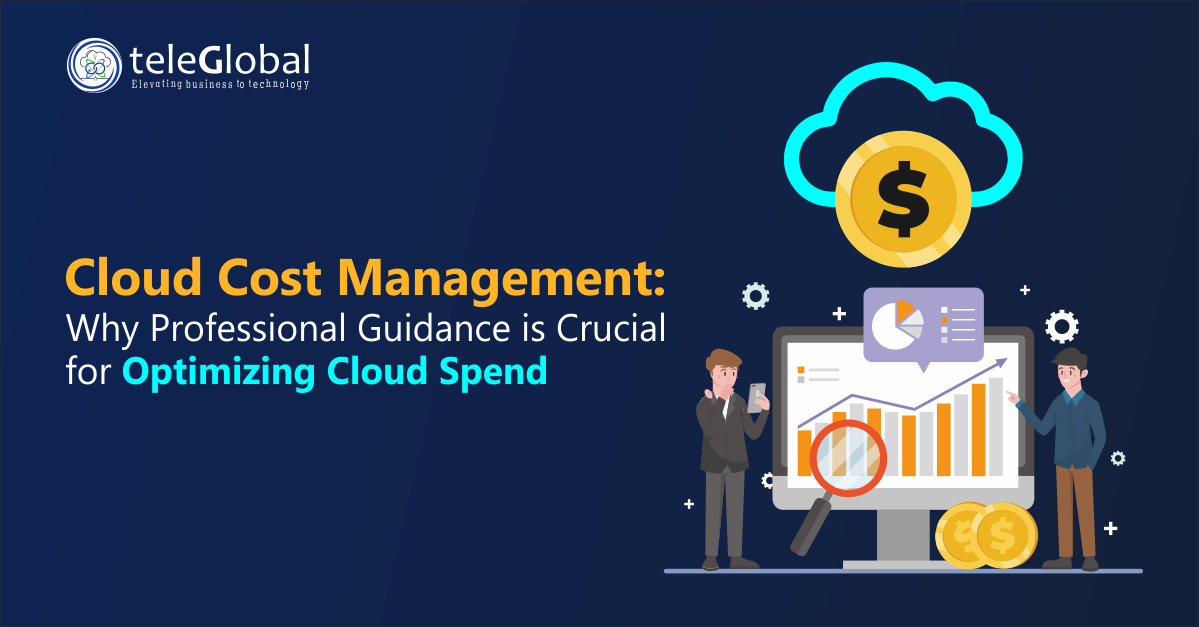
| Author: Ashish Kumar | Published: 27-Jan-2024 |
Cloud adoption is accelerating across India, the UAE, the United States, and Europe. However, more than seventy percent of cloud spend is still wasted due to underutilized resources and inefficient pricing structures. In many cases, public cloud expenses exceed budgets by nearly fifteen percent. Businesses that maintain predictable costs usually rely on accurate forecasting, strong governance, and expert monitoring.
That is why Cloud Cost Management is more important than ever. Left unmanaged, migrating to the cloud can lead to spiraling bills, unexpected overages, and confusion around usage. Cloud cost management and optimization guided by experienced professionals ensures businesses control expenses, streamline operations, and align cloud investments with wider corporate goals.
Savings are not guesswork. According to practitioners, cloud accounts optimized under expert direction often report reductions of twenty to thirty percent in their monthly bills through practices like rightsizing and automation of idle resources.
Waste often comes from idle virtual machines, unused storage volumes, or inefficient database configurations. Skilled professionals identify and automate removal of these resources before they cause expense.
Effective cost management is not about cutting spending at all cost. It is about matching cloud consumption to actual value – aligning resource use with development cycles, product adoption, or strategic KPIs instead of using rule-of-thumb budgeting.
Aligning instance size to current demand and retiring unused servers yields quick savings. Many clients typically see ten to twenty percent reduction simply by resizing workloads to match usage.
Working with providers to secure commitments like discounted instance plans or spot pricing can reduce unit costs by as much as seventy percent compared to pay-as-you-go rates.
Automation using policy rules such as scheduled shutdowns, tagging enforcement, and usage alerts helps prevent forgotten resources or surprise charges. Ongoing FinOps discipline keeps budget impact under control.
Tracking cost per team, workload or project improves transparency. This accountability encourages teams to manage their own cloud usage and fosters better financial governance.
Step 1: Assess Current Spend
Review billing for compute, storage, data movement, SaaS licenses, and usage spikes. A clear baseline guides smart targets.
Step 2: Choose Insightful Tools
Providers offer cost explorers and dashboards, while a cloud cost management datalog aggregates data across cloud accounts.
Step 3: Rightsize and Automate
Idle workloads must be shut down, servers resized to demand, and alerts triggered if usage is inconsistent or anomalous.
Step 4: Plan Discount Models
Adopt Reserved or Savings Plans for stable workloads and use spot or burst pricing for flexible tasks to leverage rate flexibility.
Step 5: Standardize Tagging and Accountability
Assign resource ownership tags. Teams justify resource usage and are held accountable via showback or chargeback reporting.
Step 6: Monitor, Audit, Adjust
Use dashboards to detect unexpected trends. Conduct quarterly reviews, adapt rate commitments, and fine-tune policies as usage evolves.
Overspending is not rare. Many mid to large sized enterprises spend twenty to thirty percent of their IT budget on cloud services. Without visibility or governance, about seventy percent of organizations experience budget leaks or inefficiencies. Businesses save significantly when they adopt expert-led initiatives—realized cost reductions between twenty and thirty percent monthly. Cloud budgets that once ranged from two to six million dollars annually become rationalized under expert oversight.
Cloud cost management is about far more than trimming expenses. It is a tool that unlocks agility, innovation, and financial clarity. Without guidance, cloud growth can become unchecked expense, shadow IT, or regulatory exposure.
Cloud Cost Management led by professionals relies on strategic planning, automation, and analytics that match your vision for growth. That includes mastering cost management in cloud computing, managing billing in AWS cloud, and choosing the right cloud cost optimization software.
We at Teleglobal work with businesses to implement tailored cloud cost management and optimization strategies. Our guidance spans tagging standards, rate negotiation, automation, and full FinOps frameworks. Our clients experience reduction in waste, better budget control, and freedom to innovate without surprising cloud bills. use of cloud resources.
Cost management in AWS includes tracking consumption, forecasting budget impact, applying savings plans, rightsizing infrastructure, and automating cleanup tasks.
Set budgets and alerts, rightsize workloads, shut down idle resources, enforce tagging, review spending regularly, and work with experts to optimize rates and usage.
It is a plan that aligns resource usage with cost goals through rightsizing, usage analytics, rate discounts, automation, chargeback models, and governance.
Yes. Cloud FinOps brings together finance, engineering, and operations to treat cloud resources as financial assets rather than variable expense lines.
 close
close

Hi there! At TeleGlobal, we turn your cloud vision into AI-accelerated reality. What challenge can we help you solve?
Powered by ![]() teleBot
teleBot